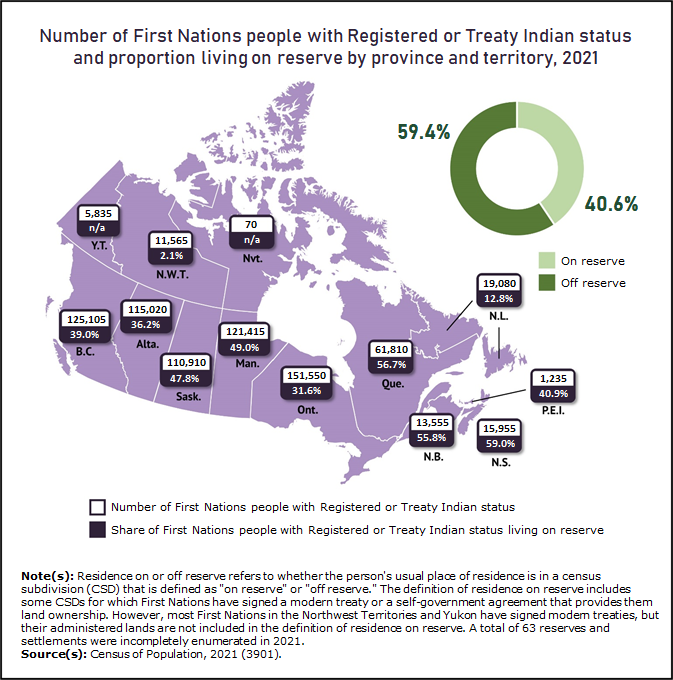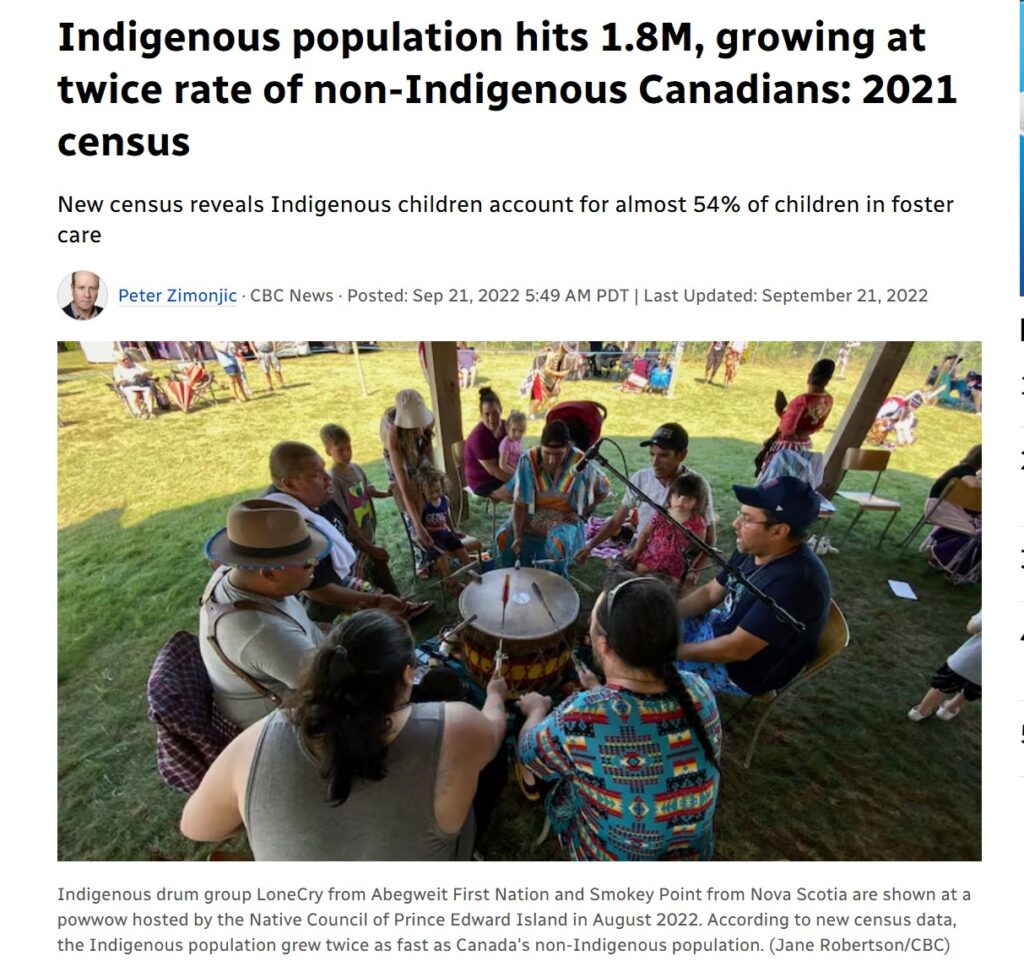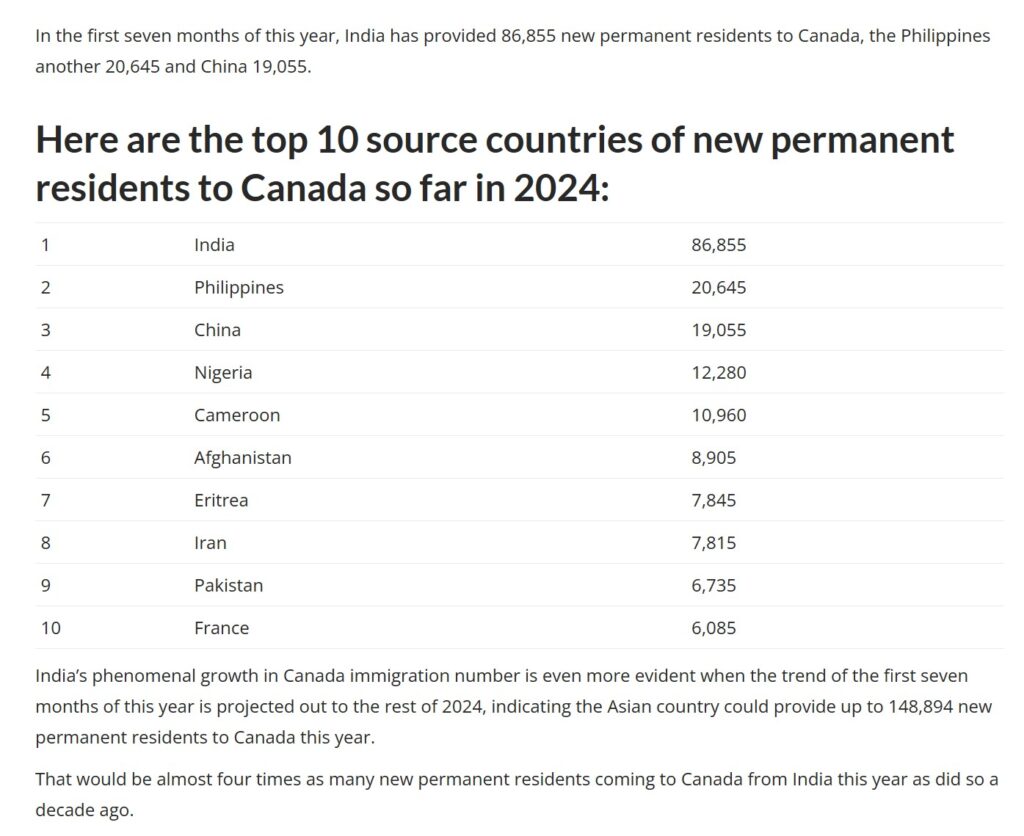Massive Immigration not Climate Change is wiping out our Salmon Stocks
PREAMBLE – HOW GOVERNMENTS WORK
The NDP/Liberal – How to open the Public’s Wallets – Feed themselves first, and apply excuses to justify their control over society.
COVID – CLIMATE CRISIS – CARBON DOOMSDAY – BY DESIGN
WORLD ECONOMIC FORUM – THE GREAT RESET
We need to start at a time in history when fish and wildlife were plentiful, and examine how we got to where we are today. There is an urgent need to prevent the extinction of our fish and wildlife, while we still can, we cannot get bogged down in racial differences or we will lose it all. The Global Elite have decided Canada is no longer sovereign, they use natural climate change, they manipulate environmentalism to impose a redesign of the global labour (formerly known as serfs) to fit the agenda of rich elite to take even more, by dividing us by race while cultivating racism and religious intolerance.
The Liberal/NDP narrative today is a 100% based on two factors, the first is that everything bad was a result of using oil and gas, the second is that the survival of the planet can only happen if we pay more, way way more taxes. That it was our greedy consumption of oil and gas, as well as every known industry today, that is the root cause of what they now call a “Climate Crisis” The next part of the narrative is that aboriginals are the primary victims of the colonization of our nation. I should have added a third factor, however hidden in this anti everything plot was flooding Canada with immigrants, in numbers that resulted in the massive increase in demand for both housing space and food consumption.
Has the public failed to see there was NEVER a decline in the use of OIL and GAS, the only thing that changed was the cost and who earned the profits. In Canada its always been about not allowing Canadians the benefits the Americans are getting from selling the ever increasing demand on OIL and GAS. We were DUPED, period.
For years we have heard from our masters in Ottawa (the Liberal/NDP) doled out a see-saw of arguments, first would be a need to create jobs, then a need for immigrants to fill those jobs, then a need for more jobs, and back and forth creating a never ending need to bring in immigrants to feed this pyramid scheme that made the many of the politicians wealthy, while simultaneously driving down the wages of the working class. Remember SNC-Lavalin (and your tax dollars) COVID-19 relief with your tax dollars, and the WE Charity Foundation funded by your taxes. (a few examples out of hundreds of incidents)
In 1960 there were an abundance of salmon, steelhead, moose, deer, fish in lakes, and it was an all round great time to live in British Columbia, and at that time the population, including aboriginals was around 1,602,000 people according to Statistics Canada. Today or 2025 the population of British Columbia is 5,646,467 so simple math shows roughly a 252.5 percent increase in people living in British Colombia, all of them eating and housed and working at jobs in our province. Most people who are under the age of 30 and or immigrated here in the last 20 or 30 years, really did not see much growth in either the communities they lived in, or the millions of acres of land that were transferred from crown land to private citizens all building houses and developing their new properties and pushing wildlife further and further back. Likewise the human consumption of fish in British Columbia would also increase by a 252.5% demand, its simple logic, more people requires more food, land and water. None of this is the consequence of climate change, however clear it is, the only way goverment can get more out of your wallet is to blame the boogeyman called climate crisis.
Keep in mind we are only talking about BC consumption, not Canada and not the global requirements. This is basically after the commercial fisheries have taken what they want, conservation only applies as a hindsight.
The screenshot below for new immigrants to Canada show India outpacing every country in the world, we see it when we go to almost every establishment in our communities, the influx is astounding and very visible. Almost every store that services the public has people from India serving you, regardless of how you feel about it. It does not end there, look no further than either our parliament and our BC legislature, where again the increases are obvious. Then we have today’s Liberals pro-immigration lobby group, which seeks to grow Canada’s population to 100 million by 2100, that means a 300 percent increase in population over and above the current demand for food, land and water. I do not blame India or the people from there, this is 100% the result of GOVERNMENT MISMANAGEMENT.
I find it odd that nobody dares to talk about our growth as humans, and demand on our lands as being the problem with our diminishing fish and wildlife. As a senior who grew up here, every lake that had a place to camp, it would be rare to meet others when we went out camping, now each lake had many campsites, and its hard to find one free on Victoria Day. Of note last fall 6 moose were taken out of the Chapman Lake area, and 2 out of Morin lake. There is no counts available for aboriginal use, but we know they also have a massive increase in population and demand on fish and wildlife.
Next we have UNDRP and I just have to ask, what was the point of giving aboriginals more fish and wildlife without giving them control over immigration rates? Seriously do you expect aboriginals to be that narrow minded that they will oppose using fossil fuels as the cause of the loss of fish and wildlife? I added the information below to show that when the judges decided to allow aboriginals to have unlimited fish and wildlife, these same judges somehow thought that there would not be an increased demand, or even considered both aboriginal and non aboriginal population growth.
Its not hard to understand why talking about immigration is taboo, its taboo because these same immigrants can vote you out of office, or into office depending on you allowing all their friends, neighbours and relatives into Canada. Again I ask why were aboriginals not given the right to control immigration, when its immigration that is the root cause of all their problems? What is the point of aboriginal rights, when there is nothing of value left over for them? Unless we change immigration rates soon it will be hard to choose if Canada or Mexico is the worst place to immigrate to.
“its taboo because these same immigrants can vote you out of office”
Here are some interesting graphics. The first is regarding our aboriginal people, what is astounding is the number that no longer live on reserves but do qualify for fish and wildlife. The second is in regards to a fact that cannot be ignored is their own needs and demands are continually growing despite the Supreme Courts Decisions. This is not sustainable, extinction will become a reality.




Dooms Day Predictions – That Never Happened.
The experts, the science, did not lie, this was a result of knowingly and intentionally deceiving the public for the personal benefits of a group of rich elitists.

OIL CRISIS – War, famine, pestilence, perhaps even extinction – those are the apocalyptic scenarios posited by folks predicting the oil age is over and the era of stringency is nigh. Almost since the first discoveries of oil in the U.S. in 1859, people have been saying we’re running out. In 1874, the state geologist of the nation’s leading oil producer, Pennsylvania, warned the U.S. had enough oil to last just four years. In 1914, the federal government said we had a ten-year supply. The government announced in 1940 that reserves would be depleted within a decade and a half.
ICE AGE IS COMING IN 10 YEARS – Consider these headlines: “The Earth’s Cooling Climate,” Science News, November 15, 1969.• “Colder Winters Held Dawn of New Ice Age,” Washington Post, January 11, 1970.• “Science: Another Ice Age?” Time Magazine, June 24, 1974.• “The Ice Age Cometh!” Science News, March 1, 1975.• “The Cooling World,” Newsweek, April 28, 1975.• “Scientists Ask Why World Climate is Changing; Major Cooling May Be Ahead,” New York Times, May 21, 1975.• “In the Grip of a New Ice Age?” International Wildlife July-August, 1975.• “A Major Cooling Widely Considered to Be Inevitable,” New York Times, September 14, 1975.• “Variations in the Earth’s Orbit, Pacemaker of the Ice Ages,” Science magazine, December 10, 1976.
ACID RAIN WILL KILL THIS PLANET – Remember the big “acid rain” scare during the 1970s and 1980s attributing damage to lakes and forests to emissions from Midwestern utilities? If so, did you ever hear the results of a more than half-billion-dollar, 10-year-long national Acid Precipitation Assessment Program study that was initiated in 1980 to research the matter? As it turned out, those widespread fears proved to be largely unfounded, since only one species of tree at a high elevation suffered any notable effect, and acidity in lakes was traced to natural causes. The investigating scientists reported that they had “turned up no smoking gun; that the problem is far more complicated than it been thought; that other factors combine to harm trees; and that sorting out the cause-and-effect was difficult and in some cases impossible.”
THE OZONE LAYER WILL DEPLETE AND KILL THE PLANET – It was the void that changed public perception of the environment forever—a growing spot so scary, it mobilized a generation of scientists and brought the world together to battle a threat to our atmosphere. But 30 years after its discovery, the ozone hole just doesn’t have the horror-story connotations it once did. How did the conversation change—and how bad is the ozone hole today? Because it blocks some radiation from reaching Earth’s surface, ozone provides critical protection from the sun’s scorching rays. If there were no ozone in the atmosphere, writes NASA, “the Sun’s intense UV rays would sterilize the Earth’s surface.” Over the years, scientists learned that the layer is extremely thin, that it varies over the course of days and seasons and that it has different concentrations over different areas.
GLOBAL WARMING WILL KILL THIS PLANET – Do you remember the good old days when we had “12 years to save the planet”? Now it seems, there’s a growing consensus that the next 18 months will be critical in dealing with the global heating crisis, among other environmental challenges. In the study, published by the journal Nature Scientific Reports, researchers identified a wide array of dubious climate claims, then programmed a computer to recognize them. The analysis has exposed the changing face of climate change denial, and details the ways in which powerful interest groups are attempting to delay climate action. Among the findings are new data to show how those spreading climate misinformation have switched over time from science denial—that is, claiming that climate science isn’t reliable—to solutions denial—the claim that solutions to slow or otherwise respond to climate change won’t work.
CLIMATE CHANGE WILL KILL US IN 10 YEARS – Greta Thunberg deleted a tweet posted in 2018 predicting the world would end in 2023. A top climate scientist is warning that climate change will wipe out all of humanity unless we stop using fossil fuels over the next five years. In a recent speech at the University of Chicago, James Anderson — a professor of atmospheric chemistry at Harvard University — warned that climate change is drastically pushing Earth back to the Eocene Epoch from 33 million BCE, when there was no ice on either pole. Anderson says current pollution levels have already catastrophically depleted atmospheric ozone levels, which absorb 98 percent of ultraviolet rays, to levels not seen in 12 million years. (THIS WAS WRITTEN OVER 7 YEARS AGO) and we are all still here, then came COVID
Let’s not forget Al Gore and how he stunned the world with his film, the “An Inconvenient Truth”
“The film was one of those rare cultural events that transformed how people everywhere saw the world around them,” says Ken Berlin, president and CEO of the Climate Reality Project, an activist group founded by Gore, via email. “It inspired millions of people to start talking about the climate crisis with everyone they knew and to personally get involved in working to solve it, creating a whole new generation of activists.”
the movie is bursting with bad science, bad policy and some outright falsehoods. The storm events Gore addresses occur naturally, and there is little or no evidence they are being made worse from human activities: sea level is rising at the same rate it was before humans started burning fossil fuels; in Miami Beach the natural rise is magnified because buildings and streets were constructed on reclaimed swampland that has been sinking; the 9/11 memorial was not flooded by sea level rise from melting ice sheets, but a storm surge at high tide, which would have happened anyway and was not predicted by Gore in his first movie, as he claims; the Greenland ice sheet undergoes melt every summer, which was large in 2012 but then unusually weak in 2017; glaciers advance and retreat naturally, as evidenced by 1,000 to 2,000 year old tree stumps being uncovered in Alaska; rain gauge measurements reveal the conflict in Syria was not caused by reduced rainfall hurting farming there, and in fact the Middle East is greening from increasing CO2 in the atmosphere; agricultural yields in China have been rising, not falling as claimed by Gore.
As long as people keep buying the F.E.A.R. (False Evidence Appearing Real) those getting your money will keep selling you more FEAR.
The cause of diminishing fish and wildlife, can be put at the feet of “Colonial” Supreme Court justices, racketeering plundering lawyers, with an assist going to NDP/Liberal politicians that could wipe out more species of plants, animals and fish, even insects to total extinction “or” subject to political privilege for the children in our future.
Below is Important Reference Materials that are relevant to this discussion.
PART TWO
Calder et al. v. B.C. attorney general (1973) — The split Supreme Court of Canada decision in this case opened the door to negotiations between the government and First Nations to establish rights to land and resources and launched the land claims process that continues to this day. B.C. cabinet minister and Nisga’a chief Frank Arthur Calder, the first status Indian to be elected to a Canadian legislature, and the Nisga’a tribal council took the B.C. government to court, arguing that the aboriginal title to about 2,600 square kilometres of Nisga’a land in and around the Nass River Valley in northwestern B.C. had never been extinguished.
Although the court ultimately ruled against the Nisga’a, the decision was the first time the courts acknowledged that aboriginal title to land existed prior to colonization and the Royal Proclamation of 1763. The judges could not agree, however, on whether that title extended to the modern day, with three of them saying it did and three arguing the title was extinguished when the laws of the B.C. colonial government took effect. A seventh judge ruled against the Nisga’a on a technicality, but the case laid the groundwork for the adoption of the groundbreaking Nisga’a Treaty in 2000, the first contemporary land claims agreement in B.C., and other land agreements.
R. v. Sparrow (1990) — This case is considered the first Supreme Court test of the scope of Section 35(1) of the Constitution Act, 1982, which recognizes and affirms the “existing aboriginal and treaty rights” of the aboriginal people of Canada and has been at the centre of many court battles over land and resource rights. In its decision, the court for the first time set out criteria for determining whether a right can be considered to be an “existing” right and whether the government is justified in curtailing such a right.
The case stems from the 1984 arrest of Ronald Edward Sparrow, a member of the Musqueam band in B.C., who was charged with violating fisheries regulations when he used a net that was longer than his fishing licence allowed. Sparrow argued that his right to fish with the net was an existing aboriginal right protected by Sec. 35 (1) of the Constitution Act. The court agreed but stipulated that the right is not absolute and can be, in certain circumstances, infringed upon.
Delgamuukw v. British Columbia (1997) — Although the Supreme Court of Canada never ruled on the question at the heart of this case, the statements it made about aboriginal land title were precedent setting for future land rights cases and the land claims process. The court confirmed that aboriginal title entails rights to the land itself, not just the right to extract resources from it. The court also ruled that the government has a duty to consult with First Nations on issues concerning Crown land and in some instances may have to compensate them for infringing on their rights to that land.
The case was launched by Chief Earl Muldoe, known as Delgamuukw, and other hereditary chiefs of the Gitxsan and Wet’suwet’en First Nations in B.C., who took the provincial government to court in an effort to establish ownership and jurisdiction over 58,000 square kilometres of territory in the Skeena watershed in northwestern B.C. The Supreme Court did not rule on the question of ownership, saying the issue had to be decided at a new trial, but gave a detailed interpretation of what constitutes aboriginal title, laying out guidelines for how the issue should be approached in future disputes.
R. v. Marshall (1999) — This court battle over fishing rights in Nova Scotia inflamed tensions between aboriginal and non-native fishermen in the Maritimes and Quebec. Donald Marshall Jr., a Mi’kmaq man from Nova Scotia who decades earlier had been wrongfully convicted — and ultimately acquitted — in a high-profile murder case, had been charged with fishing eels out of season, fishing without a licence and fishing with an illegal net but argued that aboriginal rights stemming from 18th-century treaties with the British Crown exempted him from fisheries regulations.
After the Supreme Court ruled in his favour, upholding the Mi’kmaq and Maliseet people’s rights to earn a “moderate livelihood” from commercial fishing and hunting, native lobster fishermen interpreted the ruling as granting them rights to catch lobster out of season and clashed with their non-native counterparts, who feared lobster stocks would be jeopardized. After a particularly heated showdown in Burnt Church, N.B., the court was forced to issue a clarification of its ruling, which underlined that the ruling applied to fisheries only and not to all natural resources and that the government could restrict aboriginal fishing rights in the interests of conservation.
The ruling was considered a key test of native fishing rights and sparked debate over what should and shouldn’t be considered “traditional’ use of natural resources.
Corbiere v. Canada (1999) — John Corbiere and other members of the Batchewana band near Sault St. Marie, Ont., took their band and the federal Ministry of Indian and Northern Affairs to court challenging the Indian Act provision that denied band members who lived off reserve the right to vote in band elections. They argued that Sec. 77(1) of the Act violated the equality provision of the Charter of Rights and Freedoms.
The Supreme Court of Canada agreed, declaring the part of the Act that required electors to be band members “ordinarily resident on the reserve” unconstitutional. The decision led to the changing of the Act, which now defines an elector as someone who is at least 18 and a registered member of the band, and impacted the way some bands formulated their own rules governing membership.
McIvor v. Canada (2009) — This B.C. Court of Appeal decision forced the federal government to amend the Indian Act to eliminate discrimination against the wives and children of non-status Indians. The case was launched by Sharon McIvor, a B.C. aboriginal woman who had married a non-status Indian, and her son, who was married to a non-Indian and could not legally pass on Indian status to his children.
McIvor and her son, Charles Grismer, launched a Charter challenge alleging that Sec. 6 of the Indian Act violated the right to gender equality under Sect. 15 of the Charter of Rights and Freedoms.
Prior to 1985, aboriginal women who married a non-status Indian lost their status while men who married a non-status woman remained status Indians and could confer this status onto their wives and children. The court found that an 1985 amendment to the Indian Act eliminated this provision but left in place provisions that still discriminated against some children of non-status Indians by conferring status to those whose Indian grandparent was a man but not to those whose Indian grandparent was a woman.
The appeal court ruled in the plaintiffs’ favour and ordered the government to amend the legislation within a year.
PART THREE
In British Columbia, the number of First Nations people with Registered or Treaty Indian status was 125,105, where 39.0% were living on reserve in 2021. (Reference)
By 1867, it is thought that between 100,000 and 125,000 First Nations people remained in what is now Canada, along with approximately 10,000 Métis in Manitoba and 2,000 Inuit in the Arctic. The Aboriginal population of Canada continued to decline until the early 20th century. This dramatic population decline is attributed to disease, starvation and warfare directly stemming from European settlement and practices (see Indigenous People, Health; Indigenous-European Relations; Smallpox; Tuberculosis). Since that time, the Aboriginal population has increased at a rate faster than that of the general Canadian population. Between 1996 and 2006, the Aboriginal population grew by 45 per cent, compared with 8 per cent for the non-Aboriginal population. Between 2006 and 2011, the Aboriginal population further increased by 232,385 people, or by 20.1 per cent. By comparison, the non-Aboriginal population grew by just 5.2 per cent during that same time period. (Reference)
ill C-31 restored status to those who were forcibly enfranchised and terminated status to non-Aboriginal people that acquired it through marriage (rather than ancestry). Membership in an Indian band also no longer required Indian status. This amendment restored status for 127,000 people and terminated status for 106,000 people. However, there remained a “second generation cut-off” where children of women that had “married out” were now eligible for status, but could not pass status onto their children. On 31 January 2011, Bill C-3, the Gender Equity in Indian Registration Act, came into force. This act entitles eligible grandchildren of women who “married out” to registration (estimated at 45,000 persons). (Reference)
The number of First Nations people with registered status increased by 13.7 per cent between 2006 and 2011. In addition to natural population growth and legislative changes, other factors that partially account for the significant growth of the Aboriginal population are higher fertility rates, a younger population (which is more conducive to births and less conducive to deaths), and more accurate enumeration on reserves. (Reference)
An important factor in the growth of the status Indian population is the set of positive economic incentives conferred by Registration, including free supplementary health insurance for all Registered Indians and Inuit, and in some circumstances financial assistance for higher education, exemption from taxation on reserve, and special wildlife harvesting rights. Such benefits can be substantial and are particularly attractive now that the former legal disabilities connected to Indian status, such as not being able to vote, have been repealed. The medical insurance plan alone is worth about $1,200 per person per year. Though social disadvantages of Indian status may still exist, the legal and economic benefits are now substantial enough to create incentives to seek Registered status. (Reference)
Statistics Canada has reported unprecedented growth in Canada’s Indigenous population (Indian, Métis, and Inuit). Over the 25 years from 1986 to 2011, it grew from 373,265 to 1,400,685, an increase of 275%, while the population of Canada increased by only 32% in the same period of time. Although Canada’s Indigenous peoples have higher birth rates than other Canadian groups, most of this increase resulted from “ethnic mobility”—individuals changing the identity labels they apply to themselves. (Reference)

